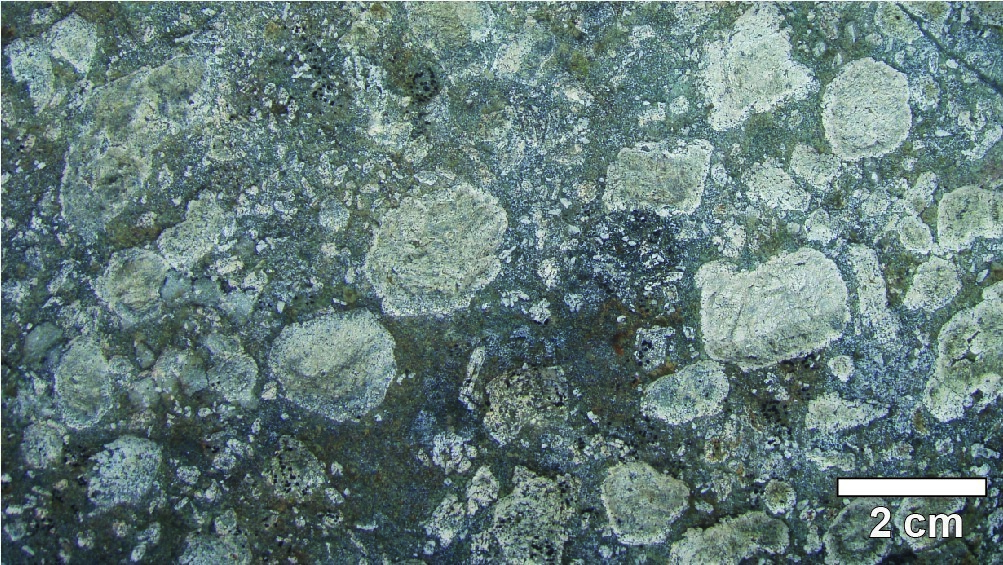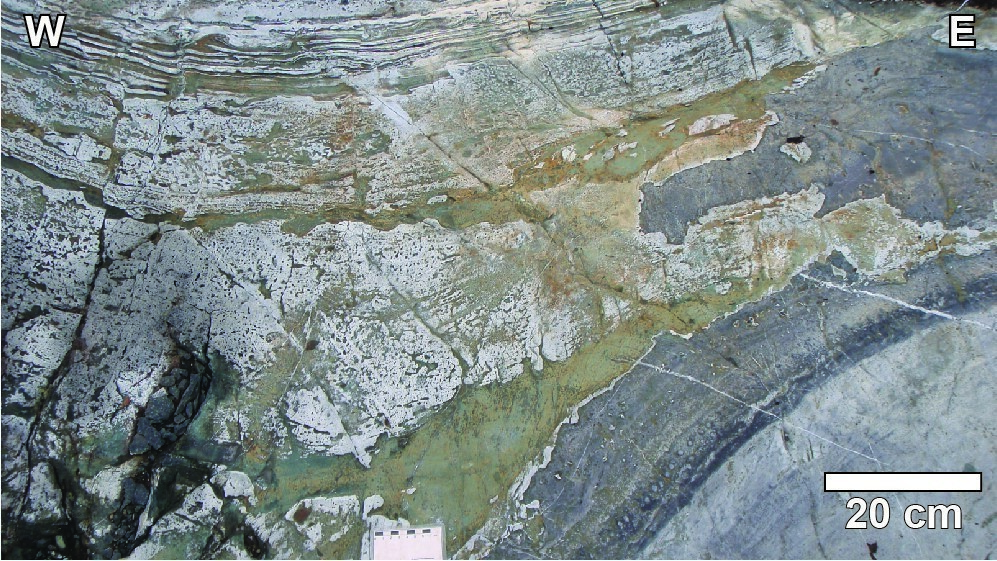
nAdbo2 Pyroxenite
nAdbo1 Gabbro, anorthosite, pyroxenite
| Author: | Allard, 1976 |
| Age: | Neoarchean |
| Reference section: | Hill located SW of Clark Lake (UTM NAD83, zone 18: 545207 m E, 5525838 m N) |
| Type area: | NTS sheet 32G16 |
| Geological province: | Superior Province |
| Geological subdivision: | Abitibi Subprovince |
| Lithology: | Mafic to ultramafic intrusive rocks |
| Type: | Lithodemic |
| Rank: | Lithodeme |
| Status: | Informal |
| Use: | Active |
Background
The unit was originally referred to as the “Upper Border Zone” by Allard (1976). It was first included in the “Upper Series” by Daigneault and Allard (1990); it now constitutes an informal lithodeme within the Lac Doré Upper Unit (Leclerc et al., 2017).
Description
Lac Doré border zone 1 (nAdbo1): Gabbro, Anorthosite, Pyroxenite
According to Leclerc et al. (2017, pp. 24–25):
“The border zone is best exposed on the northern flank of the Chibougamau Anticline, where it was recognized to the north of David Lake to the Portage Island area. The 1:10 000-scale geological synthesis of the Chibougamau mining camp (Houle, 1990) suggests that the border zone in this area consists of alternating gabbro (nAdbo1) and pyroxenite (nAdbo2). Quartz gabbro of the granophyric zone is also interstratified with rocks of the border zone similarly to that observed on the southern flank. North of Clark Lake, the border zone contains anorthosite displaying a very well-preserved cumulate structure. This massive white to light-grey rock shows a subtle layering. A second type of anorthosite contains immiscibility structures that suggest crystallization from two liquids of different composition. This anorthosite contains plagioclase as a cumulus phase and is injected by a mafic phase that is now entirely chloritized. These structures also suggest migration of mafic intercumulus liquids in a process similar to that invoked by Robins et al. (1987) in the Honningsvåg Intrusive Suite, in northern Norway. The contact between the two types of anorthosite is intrusive and irregular, including many interstratifications. At the edge of the intrusive contact, over a space of 10 cm to 30 cm, the anorthosite’s cumulate structure disappears in favour of banding characterized by concentric folds and structures. Locally, the contact is characterized by a ~10 cm-thick dark grey to black fine-grained zone, interpreted as a chilled margin.”
Lac Doré border zone 2 (nAdbo2): Pyroxenite
According to Leclerc et al. (2017, pp. 24–25):
“Pyroxenites of the border zone are interstratified with anorthosites and quartz gabbros over a thickness of a few meters north of Clark Lake, on the northern flank of the Chibougamau Anticline, and with granophyres in the Lemoine Mine area on the southern flank. The pyroxenes, altered to acicular actinolite, are accompanied by disseminated pyrrhotite, which explains the rock’s strong magnetism.”
Lac Doré border zone 3 (nAdbo3): Siderite Alteration Zone Containing Local Pyrite, Chalcopyrite and Talc
According to Leclerc et al. (2017, p. 25):
“The siderite alteration zone including pyrite, chalcopyrite and talc locally has been identified within the E-W Lac Sauvage Shear Zone and synchronous NW-SE shear zones (Houle, 1990). These alteration zones are a few tens of metres thick and extend laterally for <100 m.”
Thickness and Distribution
On the northern flank of the Chibougamau Anticline, rocks of the border zone appear in contact with volcanic rocks of the Roy Group following the trace of the Lac Sauvage Shear Zone. They are recognized over a distance of >25 km. On the southern flank of the Chibougamau Anticline, rocks of the border zone outcrop intermittently at the upper contact with the granophyric zone, along an NE-SW orientation. They are identified over a distance of >25 km.
Dating
None.
Stratigraphic Relationship(s)
Rocks of the border zone are overlying those of the granophyric zone (contact by interstratification) and cut volcanic rocks of the Obatogamau and Waconichi formations (Roy Group‘s first volcanic cycle). They are locally overlain by sedimentary rocks of the Opemisca Group. On the northern flank of the Chibougamau Anticline, rocks of the border zone may be directly overlying those of the anorthositic zone locally.
Paleontology
Does not apply.




